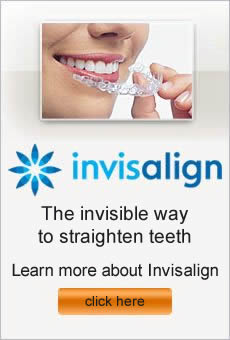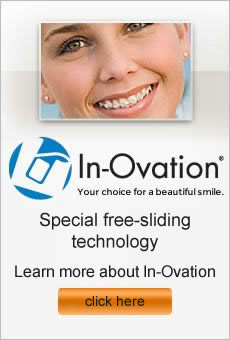You can enjoy a flawless smile at any age, including as an adult. According to the American Association of Orthodontists (AAO), approximately one in five patients is over 21. With modern orthodontic treatments, adults can achieve the gorgeous smiles they desire without the unpleasantness associated with traditional orthodontia.
At one time, metal braces were the only choice if you wanted to straighten your teeth. Now, adult patients can select from other options such as:
Ceramic brackets
Made from tooth-colored materials, ceramic braces are designed to blend with your natural teeth and offer inconspicuous orthodontic treatment. Usually, the bands used to hold the arch wires on are often clear or white. Ceramic braces, however, tend to cost more than traditional orthodontia does.
Lingual braces
With this type of treatment, the brackets are placed on the back sides of your teeth, which means they aren’t visible to others. Lingual braces will correct the alignment of your teeth, just as metal brackets would do. Treatment typically takes about the same amount of time as traditional braces. Initially, patients may have an adjustment period as they get used to having the brackets on the back of their teeth.
Invisalign clear aligners
One of the most popular choices for adults, Invisalign clear braces are custom, acrylic aligners that gently shift teeth into the desired position. The plastic trays fit over teeth and do not require any adjustments. Most of the time, no one besides your orthodontist will even know that you are undergoing treatment. Because the aligners are removable, you can keep teeth and gums in top condition.
If you have thought about straightening your smile, but hate the idea of traditional metal braces, consider Invisalign clear braces. This revolutionary system of clear, acrylic aligners can shift teeth into the proper position. The following questions and answers will give you more information about Invisalign clear braces and the benefits of this orthodontic treatment.
Why should I care about fixing my crooked teeth?
Not only will a gorgeous smile boost your confidence and improve your appearance, but straight teeth can also promote better dental health. Brushing and flossing are easier to perform on properly aligned teeth.
How does Invisalign work?
Through a series of clear aligners, Invisalign gently moves your teeth into alignment. You wear each aligner for about two weeks and then move on to the next one in the series. Treatment generally takes 12 to 18 months.
What are the advantages to Invisalign?
With Invisalign, patients don’t have to worry about the hassle and embarrassment caused by metal brackets. The custom aligners fit securely over teeth and are imperceptible to most people. Because the trays are removable, you can take them out to brush, floss, or for special occasions.
How do I know if Invisalign would work for me?
Most older teen and adult patients can choose Invisalign to correct their smiles. To confirm if this is a good option for you, schedule a consultation appointment with your orthodontist. At this visit, your doctor can discuss your goals and perform an exam to determine the best plan for creating a flawless smile.
Dr. Fotovat – Burbank Orthodontist – Invisalign Clear Braces at Mehdi Fotovat Sherman Oaks Orthodontist
Having a straight smile can offer oral health benefits as well as improve self-esteem. If you are going to invest the time and money in orthodontic treatment, you will want it to be a worthwhile effort. After a consultation, your orthodontist will complete a thorough evaluation to determine the best option to move your teeth into alignment.
Once you begin treatment, consider these tips to make the most of your orthodontic therapy:
Brush and floss after you eat
Brackets, wires, and rubber bands can trap food particles, which can increase your chances of tooth decay. Proper home hygiene can protect your teeth and gums during orthodontic treatment. If you can’t brush immediately, rinse with water.
Choose adequate tools
Make sure that you use fluoride toothpaste and a soft-bristled toothbrush. If your orthodontist suggests other products, like floss threaders or mouth rinses, take this advice to heart.
Avoid certain foods
Hard or sticky substances can cause damage to orthodontic equipment, so stay away from things like taffy, gummy bears, popcorn, and nuts. Eating a healthy, balanced diet will help your dental health and overall wellness.
Protect the equipment
When you have braces, you should use a mouth guard if you play sports. If you wear a removable appliance like head gear or a retainer, store these items in a safe place when you aren’t wearing them.
Listen to your orthodontist
Missing scheduled appointments or choosing not to wear your rubber bands will only prolong your treatment time. Your orthodontist makes recommendations so that your teeth will move into the desired position in a timely manner, so pay careful attention to your doctor’s instructions.
The specialty in dentistry that focuses on the diagnosis, prevention, and treatment of malocclusions, orthodontics allows dental providers to straighten teeth and improve your oral health. Modern advances now give patients more options for treatment. If you are considering orthodontic therapy for your self or a loved one, the following questions can help give you more information during the decision-making process.
What is the difference between an orthodontist and a dentist?
All orthodontists are dentists, but not all dentists are orthodontists. In addition to dental school, orthodontists must complete another two to three years of specialized training.
When should my child see an orthodontist?
The American Association of Orthodontists (AAO) suggests that all children have an initial evaluation by age seven.
What is Phase I orthodontics?
Orthodontic treatment between ages six and ten years old is referred to as Phase I therapy. The goal of early orthodontics is to correct issues that respond best to treatment before growing is complete.
Am I too old for orthodontic treatment?
You are never too old to enjoy the benefits of a healthy, straight smile. Roughly one-third of orthodontic patients are adults. Options like lingual braces, ceramic brackets, and clear aligners enable adults to maintain their mature images while they transform their smiles.
How long will orthodontic treatment last?
The length of your therapy depends on several factors, including severity of the problem, compliance with instructions, and movement of your teeth. On average, orthodontic treatment lasts about 18 months.
When most people think about orthodontics, they envision braces or retainers. Sometimes, your orthodontist may recommend a temporary anchorage device (TAD). Made of titanium alloy, the TAD is a miniature screw that serves as an anchor to move teeth in a very controlled manner. Because the TAD does not move, the tooth or teeth can move against a fixed point to create the desired results.
Your orthodontist can place the TAD in the office, with minimal discomfort. After numbing the area with a fast-acting gel and applying local anesthetic, the doctor will insert the appliance through the gums into the bone between your teeth. Most people experience a feeling of some pressure, but no actual pain. Usually, patients respond well to the procedure, with no need for even over-the-counter medications like ibuprofen or acetaminophen.
Because the device is temporary, your doctor will monitor the progress and remove the screw once the teeth have shifted as desired. Usually, patients only wear TADs for a few months. If the TAD irritates your cheeks or lips, use a q-tip to apply orthodontic wax and cover the device. Call your doctor if the discomfort persists.
For the first week, rinse the TAD with chlorhexidine two to three times daily. You will also need to use a soft toothbrush dipped in chlorhexidine to brush around the post during the initial seven days after placement. After this point, treat the TAD like a tooth by brushing at normal times. With a TAD, you may feel some loosening, which is normal. If it feels excessively loose or becomes uncomfortable, contact your orthodontist.
Temporary Orthodontic Appliances at Mehdi Fotovat Sherman Oaks Orthodontist



